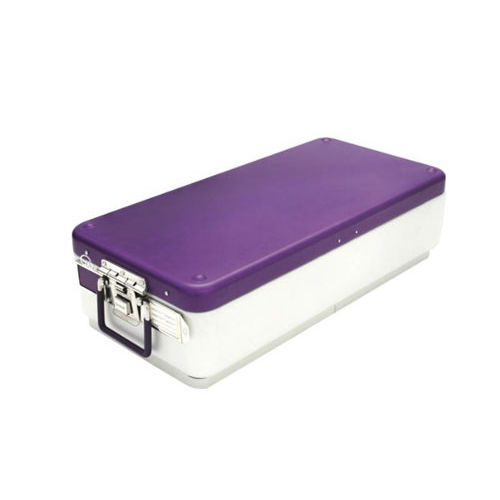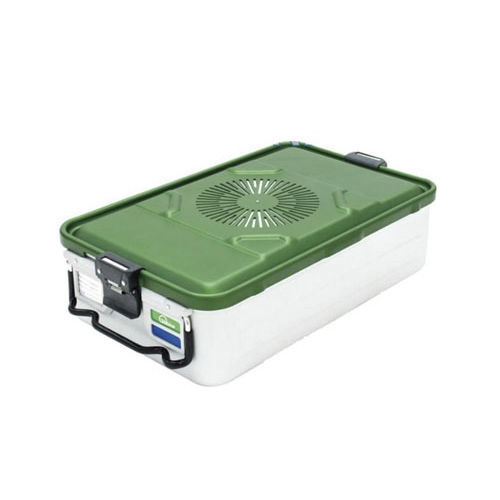
#Industry News
What is a chemical sterilizer?
Tips for Optimizing the Use of Chemical Sterilizers
Chemical sterilizers are essential pieces of equipment used in many industries, including healthcare, food production, and laboratory settings. They are designed to kill or eliminate all forms of microorganisms such as bacteria, viruses, fungi, and spores, from medical equipment, surgical instruments, laboratory supplies, and even food items.
One type of chemical sterilizer is an EO sterilizer, which uses ethylene oxide gas to sterilize equipment and supplies. Ethylene oxide is a colorless gas that is highly effective at destroying microorganisms, even at low concentrations.
The process of sterilization using an EO sterilizer begins by placing the items to be sterilized into a sealed chamber. The chamber is then filled with a mixture of ethylene oxide gas and other gases to create the ideal environment for sterilization. The items are left in the chamber for a predetermined amount of time, allowing the gas to penetrate the materials and kill any microorganisms present.
Once the sterilization process is complete, the chamber is vented to remove the gases and allow the items to air out. Ethylene oxide gas is highly flammable and toxic, so it's important to follow strict safety protocols when using an EO sterilizer.
EO sterilizers are commonly used in healthcare settings to sterilize surgical instruments, medical equipment, and other supplies. They are also used in the food production industry to sterilize spices, herbs, and other ingredients.
One of the main advantages of using an EO sterilizer is that it can penetrate many types of materials, including plastics, rubber, and metal. This makes it a versatile choice for many different applications.
However, there are also some potential drawbacks to using EO sterilizers. One concern is that the residual gas left on the sterilized items can be harmful to patients or workers if not properly ventilated or removed. Additionally, the use of ethylene oxide gas is regulated by the Environmental Protection Agency (EPA) due to its potential impact on the environment and human health.
While ethylene oxide sterilization is highly effective at eliminating microorganisms, it also produces ethylene oxide tail gas, which can pose a risk to human health and the environment. Ethylene oxide is a highly reactive gas that can cause respiratory irritation, nausea, and headaches, among other health effects, in high concentrations.
Therefore, it is important to take steps to minimize exposure to ethylene oxide tail gas and properly handle the waste generated during the sterilization process.
How to deal with ethylene oxide tail gas?
Use a properly designed and maintained sterilization system: A well-designed and well-maintained EO sterilization system will have effective ventilation and air purification systems to capture and remove ethylene oxide tail gas.
Properly vent and exhaust the sterilization chamber: It is essential to properly vent and exhaust the sterilization chamber after the sterilization process is complete to remove any residual ethylene oxide gas. This should be done in a well-ventilated area with exhaust fans that direct the gas away from workers and other people.
Monitor the workplace for ethylene oxide levels: Regular monitoring of the workplace for ethylene oxide levels can help detect any leaks or exposure risks. Workers should wear personal protective equipment, such as respirators and gloves, when handling sterilized items.
Properly dispose of ethylene oxide waste: Ethylene oxide waste should be handled and disposed of in accordance with local, state, and federal regulations. The waste should be collected in sealed containers and labeled as hazardous waste. It should be transported and disposed of by a licensed hazardous waste disposal company.
In conclusion, ethylene oxide tail gas is a potential hazard that should be carefully managed to minimize risks to human health and the environment. By following proper safety protocols, using well-designed and maintained sterilization systems, and properly handling and disposing of waste, we can ensure that ethylene oxide sterilization remains a safe and effective method for eliminating microorganisms in a variety of applications.
#EOsterilizer; #Medicalsterilizer; #SterilizationEquipment; #Chemicalsterilizer; #GalbinoTechnologyInc; #MedicalSupplies;
#CSSD; #Equipmentmanufacturer







